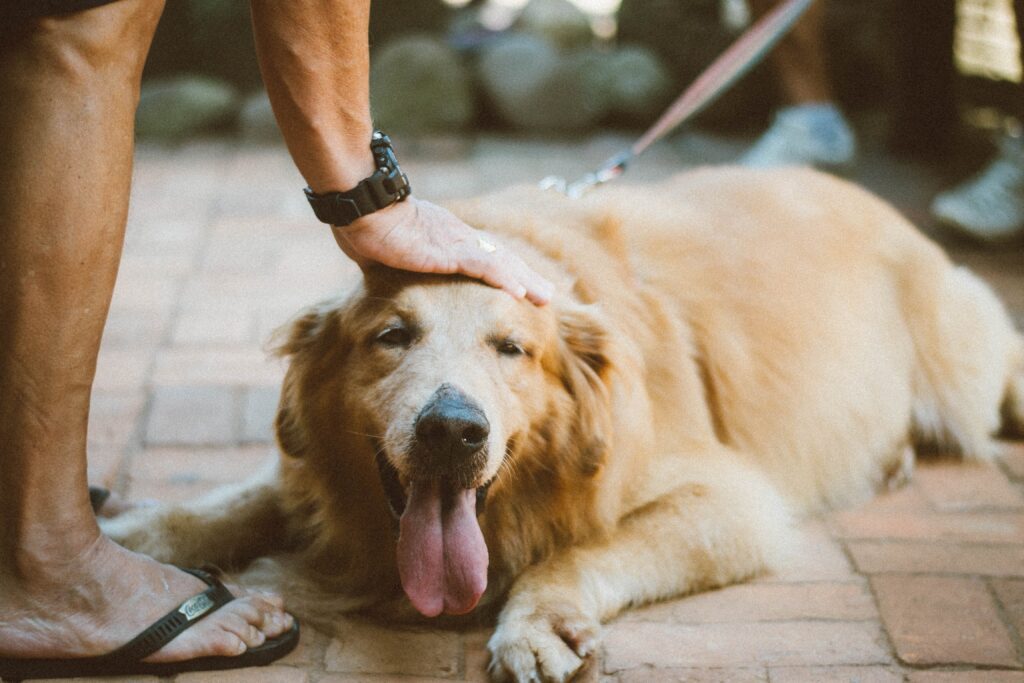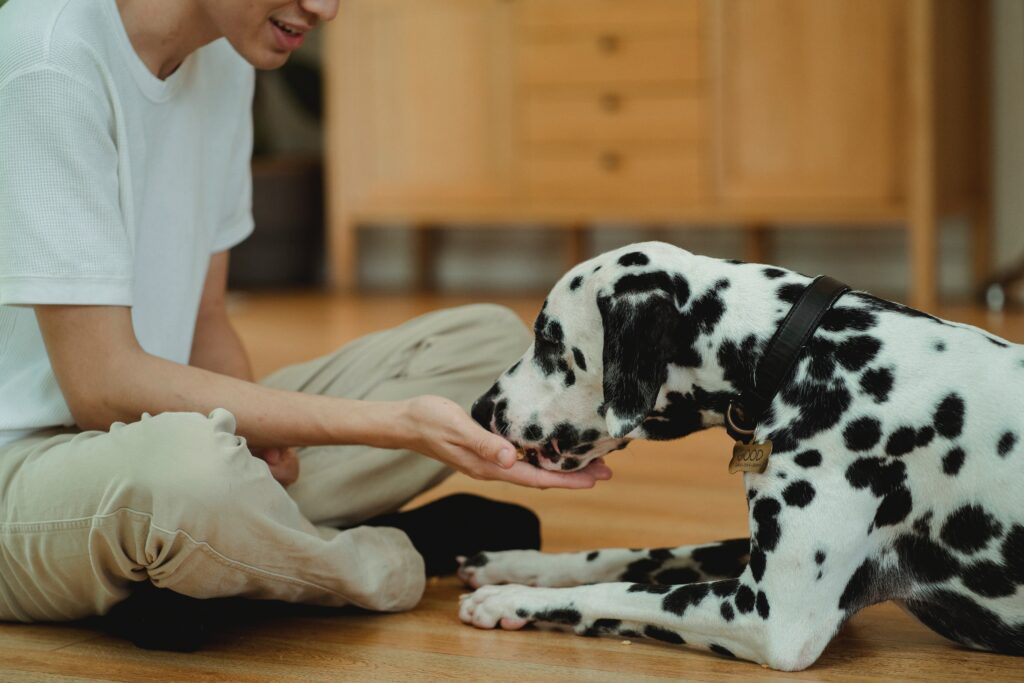The Secret to a Well-Behaved Dog: Effective Training Methods

Raising a well-behaved dog is not just about having a pet that doesn’t cause trouble. It’s about fostering a strong, respectful, and loving bond between you and your furry friend.
This guide will provide you with comprehensive insights and practical tips to help you on your journey to raising a well-behaved dog.
Understanding Your Dog’s Behavior
Before you can train your dog to be well-behaved, it’s crucial to understand why dogs behave the way they do. Dogs are not naturally naughty or disobedient; they simply react to their environment and the cues they receive from their owners. Understanding your dog’s behavior is the first step toward effective training.
Communication is Key
Dogs communicate primarily through body language. Paying attention to your dog’s body language can provide valuable insights into their emotions and intentions.
A wagging tail, for instance, can indicate happiness, while a lowered tail might signify fear or submission.
Consistency is Crucial
Dogs thrive on consistency.
They learn best when rules and routines are consistent. If you allow your dog on the couch one day and scold them for it the next, it will confuse them and make training more difficult.
Essential Training for a Well-Behaved Dog
Start Early, But It’s Never Too Late
The best time to start training is when your dog is still a puppy. However, older dogs can also learn new behaviors and unlearn bad ones. The key is to be patient, consistent, and positive.
Basic Commands
Teaching your dog basic commands like “sit”, “stay”, “come”, and “heel” is essential. These commands can help you manage your dog’s behavior and keep them safe.
Socialization
Socialization is a critical aspect of raising a well-behaved dog. Expose your dog to different environments, people, and other animals to help them become more comfortable in various situations.
Dealing with Common Behavior Problems
Even with the best training, dogs can develop behavior problems. The key is to address these issues promptly and appropriately.
Excessive Barking
While barking is a natural behavior for dogs, excessive barking can be a problem. Training your dog to respond to a “quiet” command can be helpful.
Leash Pulling
Leash pulling can make walks stressful. Training your dog to walk nicely on a leash can make walks more enjoyable for both of you.
Aggression
Aggression towards people or other animals is a serious issue. If your dog shows signs of aggression, it’s important to seek help from a professional dog trainer or behaviorist.
The Role of Positive Reinforcement
Positive reinforcement is a cornerstone of effective dog training. This method, which involves rewarding your dog for exhibiting desirable behavior, encourages them to repeat that behavior in the future.
It’s a powerful tool that leverages your dog’s natural desire to please and their love for rewards.
Understanding Positive Reinforcement
At its core, positive reinforcement is about acknowledging and rewarding good behavior. When your dog does something you want them to do, you immediately reward them.
This could be when they sit on command, come when called, or even just lie quietly by your side. The reward, which can be a treat, a toy, praise, or a combination of these, signals to your dog that they’ve done something good.
The Power of Immediate Rewards

Timing is crucial in positive reinforcement. The reward should be given immediately after your dog performs the desired behavior.
This helps your dog make the connection between their action and the reward. If the reward is given too late, your dog may not associate it with their behavior, making the training less effective.
The Importance of Exercise in Raising a Well-Behaved Dog
Regular exercise is not just essential for your dog’s physical health; it also plays a crucial role in their behavior. A well-exercised dog is more likely to be calm and less likely to engage in destructive behaviors.
Tailoring Exercise to Your Dog’s Needs
Different breeds and ages of dogs have different exercise needs. High-energy breeds like Border Collies or Jack Russell Terriers may require more exercise than more laid-back breeds.
Puppies and young dogs generally have a lot of energy and may require multiple play sessions each day, while older dogs may be content with a leisurely walk.
Mental Stimulation
Exercise isn’t just about physical activity. Dogs also need mental stimulation to stay happy and well-behaved. Training sessions, puzzle toys, and games like hide and seek can provide valuable mental exercise for your dog.
FAQs
How to train your dog to behave in the house?
Start by establishing house rules and being consistent in enforcing them. Use positive reinforcement to reward good behavior. For example, if your dog stays off the furniture, give them a treat or praise. If your dog has a specific behavior issue, like chewing on furniture, redirect their attention to appropriate items like chew toys. Crate training can also be useful in-house training, as it provides your dog with a safe space and helps prevent destructive behavior when you’re not home.
What is the most well-behaved dog?
The behavior of a dog can greatly depend on its training, socialization, and individual personality. However, some breeds are often noted for their good behavior. Breeds such as the Labrador Retriever, Golden Retriever, and Poodle are often praised for their trainability and good nature.
How is my dog so well-behaved?
A well-behaved dog is usually the result of consistent training, socialization, and a nurturing home environment. If your dog is well-behaved, it’s likely because you’ve invested time in training them, exposing them to a variety of social situations, and providing a consistent set of rules and expectations. Your dog’s individual temperament also plays a role, as some dogs are naturally more calm and easygoing.
What is considered a well-trained dog?
A well-trained dog is one that responds reliably to basic commands like “sit”, “stay”, “come”, and “heel”. They are comfortable in a variety of social situations and behave appropriately around people and other animals. They don’t exhibit problematic behaviors like excessive barking, chewing, or aggression. A well-trained dog is also able to walk nicely on a leash and is house-trained.
How to describe a dog’s personality?
Describing a dog’s personality can include its temperament, behavioral tendencies, and reactions to different situations. You might describe your dog as friendly, energetic, calm, or shy. You could talk about how they behave around other dogs and people, how they handle new environments, and their play habits.
Well-Behaved Dogs: A Result of Love, Patience, and Effective Training
Raising a well-behaved dog is a rewarding journey that strengthens the bond between you and your furry friend.
With patience, consistency, and the right training techniques, you can help your dog become a well-mannered and happy member of your family.
Remember, every dog is unique, so what works for one might not work for another. The key is to understand your dog and tailor your training to their needs and personality.

